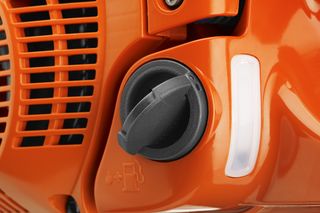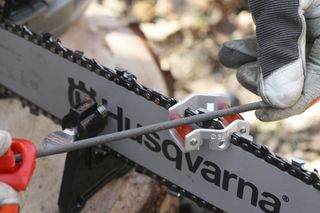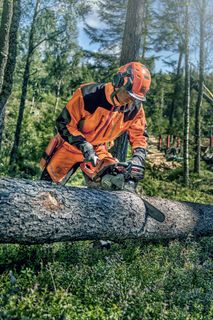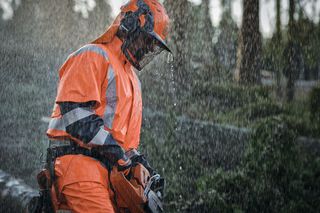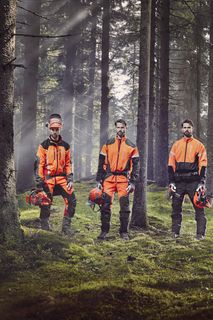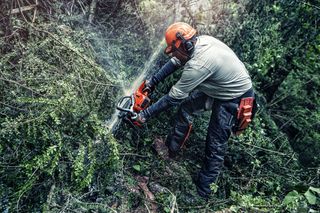
Working techniques and safety when felling trees
For safe and efficient tree felling you should follow these simple steps.
Safety distance: at least twice the tree height
Before felling, you should make sure that there are no people within a distance of at least twice the tree height from the tree you intend to fell. You and your work colleagues should use signal coloured jackets or vests to be easily visible to each other and passers-by.
Plan the felling
Start planning the felling work before you arrive at the tree. Decide the felling direction. Note the different factors that could affect the felling, such as wind direction, wind strength, slope and obstacles around the area.
Study the tree. Has it been damaged by decay, cracks or some other factor? Is there a risk of dry or broken branches falling from the tree or from adjacent trees? Is the tree leaning? In which direction should the tree be felled, bearing in mind your future work?
For the subsequent limbing work, it is advisable to adopt an appropriate working height. For example, you can make sure that the tree is felled on a felled tree trunk, rock or any other elevation in the terrain. Watch out for the butt end jumping up laterally.
How far will the tree reach?
When felling trees close to buildings, it is often important to be in control of both the tree’s felling direction and how far it reaches. One way is to use simple geometric principles and determine the point on the ground that provides an equilateral and right-angled triangle, that is to say equidistant to the height of the tree. This principle can be determined using a wood stick. Hold the stick so that the distance to your eye is equal to the stick length, and the angle between the two sides of the triangle is straight. Your eye should ideally be at the same height as the stump.
Fell in the natural direction of fall if possible
Most trees have a natural direction of fall. This is affected by the tree’s lean, the shape of the branches and any crown snow-load (snow-covered branches). If you are unsure of the tree lean, move a little away from the tree and check with a plumb rule.
To a certain extent, it is possible to force a tree to fall against its natural direction of fall, but this is always at a cost of increasing the risk and of the extra physical exertion needed. It requires knowledge, skills and experience together with the right felling support tools. Trees with weak timber, such as dead or decayed trees, should always be felled in the easiest direction.
Tree lean, shape, length, diameter, species and decay are factors that affect tree felling, as well as the slope of ground, wind direction, overhead lines, roads and buildings.

